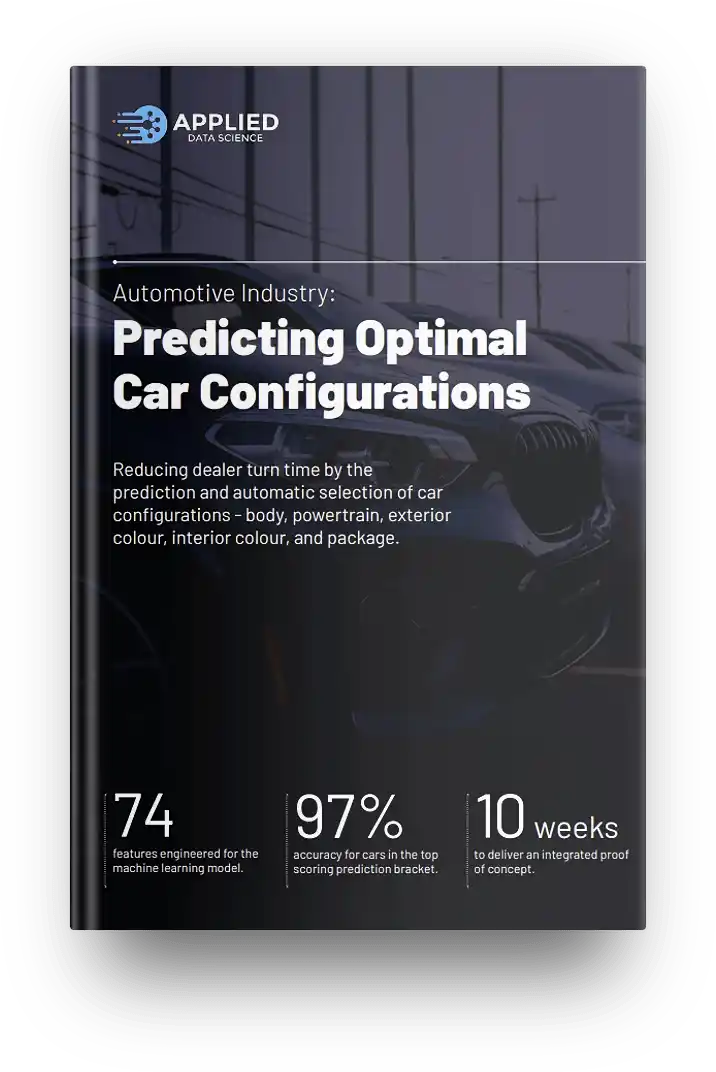
The Opportunity
Our client is an international software provider for car dealerships across North America that improves the efficiency of the industry through innovative solutions.
They were looking to add an AI component to the ordering process for one of their key car brands, with the aim to reduce order time and improve inventory turn speeds.
The model needed to be interpretable so that ordering teams could understand the rationale behind configuration selections.
What we did
✔︎ Built a machine learning (ML) model to predict car configurations that sell quickly
✔︎ Delivered a bespoke optimisation algorithm that outputs the optimal next order, given predictions from the ML model and current stock positions
✔︎ Added interpretability to the model to help dealerships understand the reasoning behind individual predictions
The Results
The end-to-end application was built in Docker containers that could be rapidly deployed and integrated into the existing application. It was delivered to the client’s tech team in several one-on-one sessions alongside a fully documented codebase. We additionally delivered a comprehensive report to the client’s data team which explained the development and update process for the model.
97%
accuracy for cars in the top scoring prediction bracket.
How we did it
We built and optimised a Python LightGBM model to predict the speed at which each car configuration would sell, including features such as local stocking positions within each dealership group. We used sales and inventory history from across North America from a wide variety of dealerships.
The output of the predictive model was fed into a bespoke optimisation algorithm that was trained to output the optimal inventory position and the next order required to reach this position.
We included additional configuration elements such as the ability to select a ‘risk’ profile, where additional weighting could be given to rarer configurations of vehicles with high potential. This allowed us to combine the benefits of machine learning with a practical understanding of how the model is deployed to the existing user base.
It was key for ordering teams to understand the rationale behind the model predictions and optimal orders. For this reason, we included a human interpretable statement of each prediction in the API output, using SHAP values.

Download our case study

Start a conversation
Take the first step by speaking with one of our data experts today.



